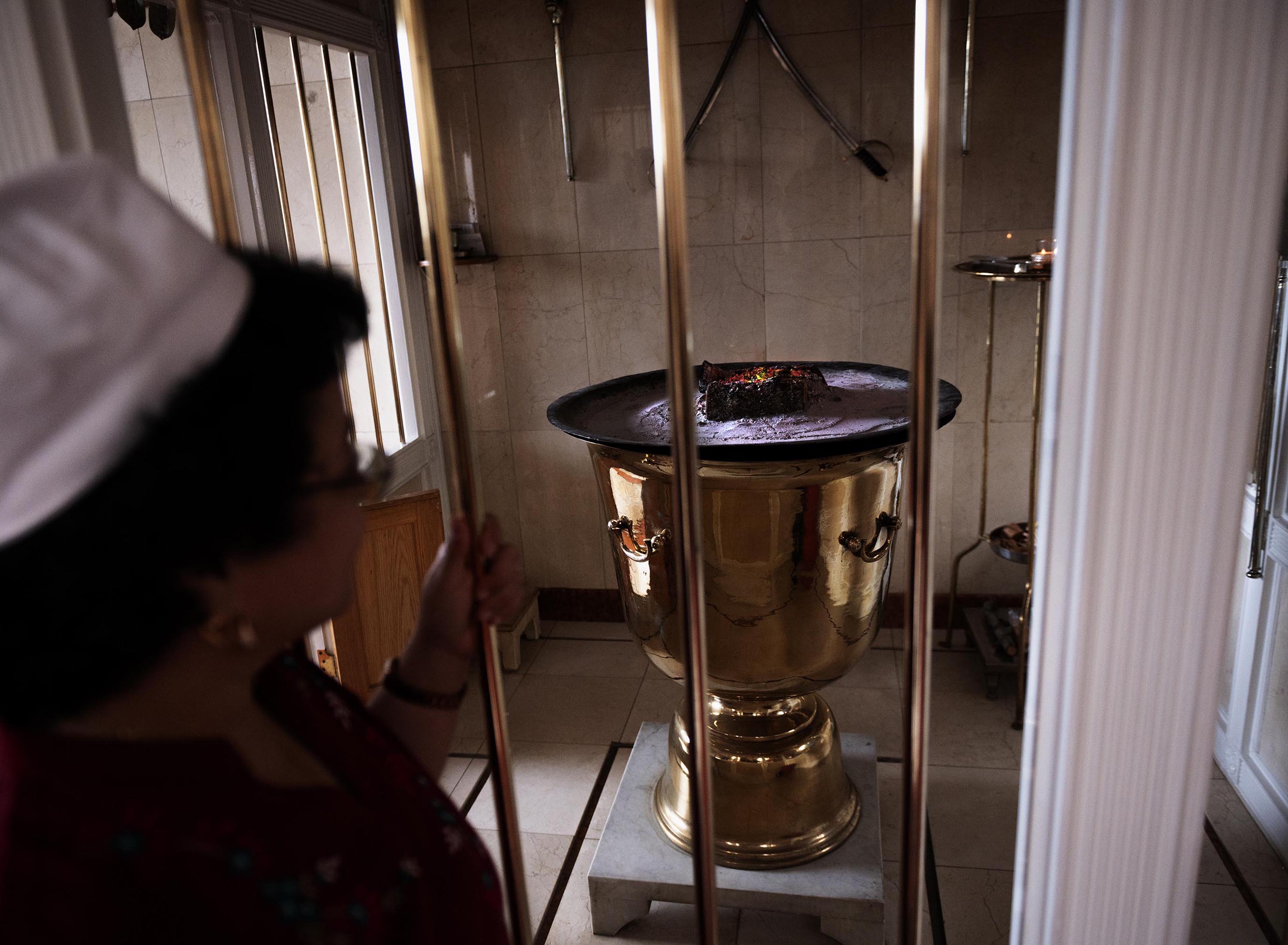← Moving Pictures:
SITE PERFORMNACE
Moving Pictures: reusing cinemas as places of worship in the diaspora
The Zoroastrian Centre for Europe, London








The Zoroastrian Centre, the former the Grosvenor Cinema in Rayners Lane, adapted by ZTFE (Zoroastrian Trust Funds of Europe) was selected for a granular-scale exploration of the tangible and intangible heritage of the community and their building. Using the site-integrity methodology the congregation were directly involved in the capture and analysis of their own cultural heritage through a series of co-created film installations.
![]()
![]()
Working in close collaboration with the congregation and resident priest, a well-defined framework for filming the Jashan and Boi ceremonies was established. As a result, a series of filming devices were constructed that captured the religious and social practices from the perspective of the congregation. These films were then projected back into the site, enabling an exact transfer of scale and time as the image mapped the architectural site. Technically, the context of this research lies in the origins of early cinema, with reference to the Lumière Brothers' Cinématographe (a three-in-one device that could record, develop, and project). Through this fieldwork, site-integrity encouraged the generation of grassroots perspectives and insights by actively involving the faith community in the creative process.


Working in close collaboration with the congregation and resident priest, a well-defined framework for filming the Jashan and Boi ceremonies was established. As a result, a series of filming devices were constructed that captured the religious and social practices from the perspective of the congregation. These films were then projected back into the site, enabling an exact transfer of scale and time as the image mapped the architectural site. Technically, the context of this research lies in the origins of early cinema, with reference to the Lumière Brothers' Cinématographe (a three-in-one device that could record, develop, and project). Through this fieldwork, site-integrity encouraged the generation of grassroots perspectives and insights by actively involving the faith community in the creative process.